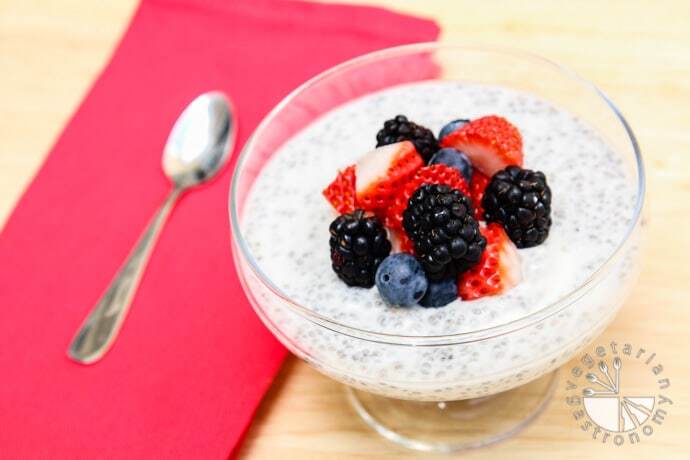- More Relief. Less Medication.
- Posts
- 🧠 Is Your Migraine Really A Migraine?
🧠 Is Your Migraine Really A Migraine?
A bad headache isn't a migraine... But a migraine is definitely a bad headache!

Your hub for natural migraine management. More Relief. Less Medication.
Hey 👋
We’re the 🧠 Migraine Mentors
This issue takes 9 minutes to read, but if you’ve only got 60 seconds, here’s what you need to know:
A LOT of people have been told they have migraine symptoms when they’re actually dealing with tension headaches.
Migraine symptoms can present in a multitude of ways, but they have specific symptoms that headaches don’t; chronic headaches usually have specific traits and referral patterns that they follow.
Electrolytes are a game changer for managing migraine symptoms.
Food is medicine; Treat it that way!
Let’s get into it!
🧠 The Migraine Mentors
First time reading?! Sign up HERE.

In This Week’s Edition…
🔈️ The Migraine Mentors Minicast - Podcast Series = 🔥 NEW!
Is Your Migraine REALLY A Migraine? Here’s How To Tell…
💣️ This Week’s Sponsor
Dr. Gundry MD - Here’s Why You’re Not Losing Weight…
🥡 Weekly Take-Out
Meme of The Week - Is That Really You?
📜 This Week’s Top Article
Migraine vs. A Bad Headache - What’s The Difference?
🧨 Pro Tip
How To Optimize Healing with Proper Hydration
🍴 Migraine-Friendly Recipe of the Week
Coconut Chia Pudding with Fresh Berries

🗞️ MIGRAINE MINICAST
Is Your Migraine Really A Migraine? Here’s How To Tell…
These podcast episodes have been an absolute blast to record and share because of the amount of feedback and questions we’re getting from our community.
As weird as it sounds, we’ve seen patients and talked to people who thought they were dealing with migraine symptoms, but were actually dealing with different forms of headaches, dizziness, and hormonal problems.
And while that sounds crazy, we keep seeing it again and again… So this episode is for those of you who are questioning whether or not your symptoms are migraine-based.
🔻 🔻 🔻 🔻 Click the link below to check it out! 🔻 🔻 🔻 🔻

Eating healthy but can’t lose weight? Here’s why…
You’re eating right, hitting the gym, and doing the “right” things… yet those stubborn pounds just won’t budge. Sound familiar? Dr. Gundry reveals a shocking truth: The real problem might be hiding in your fruit bowl.
In this must-see video, you’ll discover 3 fruits secretly sabotaging your weight loss efforts — plus 1 amazing food, rich in a substance that can help target stubborn fat. If you’re ready to feel confident in your body and finally see results, don’t wait. Watch now to learn the secret!

🥡 WEEKLY TAKE-OUT
Meme of The Week

“Hey! It’s YOU again…” - No One, Ever

📜 TOP ARTICLE
Migraine vs. A Bad Headache - What’s The Difference?
If you’ve ever wondered whether your pounding head is just a bad headache or something more serious, this article is for you.
Understanding the difference between a bad tension headache and a migraine is critical, especially if you’re dealing with recurring symptoms that continue to disrupt your life.
This article isn’t meant to be controversial, but inherently, it will ruffle some of your feathers if you’ve been led down the wrong path…
❓ What Is a Headache?
A headache is a broad term for pain or discomfort in the head or neck region.
Most headaches are caused by tension, dehydration, or environmental triggers, and are temporary in nature…
And while that doesn’t sound much different than a migraine, there are specific factors to consider.
🗒️ Common Headache Symptoms Include:
Mild to moderate (and sometimes severe) pain (often described as a dull ache)
Pain localized to the forehead, temples, or back of the neck, often as a “band around the head" type of tension
Rarely (if ever) accompanied by additional symptoms like nausea, light/sound sensitivity, or peripheral visual changes (like an aura)
Tension headaches, the most common type, often result from muscle tension, stress, and/or poor posture.
These headaches can happen at any time and aren’t influenced by hormonal changes or shifts in menstrual cycles.
❔ What Is a Migraine?
A migraine is more than just a headache—It’s a true neurological condition with distinct and often debilitating symptoms that carry a predictable pattern (for the most part).
🗒️ Symptoms of a Migraine Typically Include:
Moderate to severe throbbing pain, usually on one side of the head
Nausea or vomiting
Sensitivity to light, sound, or smells
Visual disturbances (auras) such as flashes of light, blind spots, or zigzag patterns
Correlations with menstrual cycles (in females) and hormonal changes
Unlike headaches, migraine symptoms often involve underlying neurological changes and can last for hours to days, making them much harder to manage.
They can also be influenced by changes in weather, hormones, the environment, and sensory-driven stimuli.
💭 What Are The Different Triggers for Migraine vs. Headaches?
Both conditions have distinct triggers and underlying causes:
Chronic Headaches
Stress and muscle tension
Dehydration
Poor sleep or skipping meals
Trauma (concussions, auto accidents, etc.)
Migraine
Neurological hyperactivity and imbalances in the brainstem
Hormonal shifts (e.g., during menstruation or menopause)
Specific dietary triggers (like caffeine, alcohol, or aged cheese)
Sensory overload or heightened nervous system sensitivity
Understanding the difference is key to choosing the right treatment strategy… Especially if you’ve tried medications, injections, and other therapies that haven’t made improvements in your symptoms.
📈 How to Manage Chronic Headaches vs. Migraine Symptoms
Here’s a checklist for each condition to help reduce symptoms and prevent recurrence:
🧠 For Headaches
Stay Hydrated: Dehydration is a common headache trigger. Drink at least 2 liters of water daily.
Stretch and Relax: Tension headaches respond well to neck and shoulder stretches or gentle yoga.
Over-the-Counter Relief: Occasional use of pain relievers like ibuprofen can help, but it’s best to avoid overuse.
Stress Management: Incorporate mindfulness or deep breathing to release tension.
🧠 For Migraine
Identify Triggers: Keep a migraine diary to track food, environmental, or hormonal patterns.
Support Your Nervous System: Magnesium supplements, riboflavin (B2), Feverfew, Fish oil, and CoQ10 can reduce migraine intensity and frequency.
Focus on Diet: Incorporate anti-inflammatory foods like leafy greens, healthy proteins like chicken and salmon, and good fats like olive oil. Avoid known triggers like processed foods or alcohol.
Rest Your Senses: Use earplugs or noise-canceling headphones and dim lighting during episodes.
🩺 When to Seek Professional Help
Recurring headaches or migraine symptoms deserve attention from a healthcare professional, especially when they’re unresolved or getting worse over time.
A specialist can help you with the following:
Perform tests to rule out serious conditions (like sinus issues or neurological disorders)
Provide tailored treatments like visual and vestibular rehabilitation, modify medications, and create personalized treatment & lifestyle plans
Help you understand and address underlying triggers
Give you the tools to help you optimize and own your health outcomes
Remember, even severe migraines can improve with the right care and treatment!
🩹 Don’t Settle for “It’s Just a Headache”
If you’ve been shrugging off frequent headaches or migraine symptoms for a while, it’s time to take action.
Knowing the difference between the two can guide you toward better solutions, especially if you’re dealing with both of these conditions at different times, as many often do.
With the right strategies, tools, and professional support, you can find relief—and get back to living your best life.
And always remember that you’re not alone on this journey…

🧨 MIGRAINE PRO TIPS
How To Optimize Healing with Proper Hydration
If you get regular migraine attacks, you’ve probably had some well-meaning idiot tell you to drink water…
With migraine, it’s not the amount of water that matters.
🧂 It’s the electrolytes that make the difference!
Here’s why…
🧬 The genetics of migraines cause your cells to accidentally leak out electrolytes.
If you don’t know what electrolytes are, they’re sodium, potassium, calcium, magnesium, etc.
🌪️ When they leak out these electrolytes, the cells become easier to wear out.
This becomes a serious issue when a migraine rolls through.
Think of it like this…
🦠 Remember during COVID-19 when everything shut down?
❌ Small businesses that didn’t have a lot of extra cash failed.
👍️ Small businesses that were already successful made it through just fine.
It’s the same situation with migraine symptoms…
When a migraine hits, the areas that give you symptoms run out of electrolytes in the same way small businesses run out of money.
💊 That’s why supplementing with electrolytes is so important!
It gives you enough of a cushion so when a migraine rolls through, it doesn’t deplete your supply.
🧠 Healthy nerves have a healthy store of electrolytes, and if you get migraine attacks, you’re already genetically predisposed to be deficient in these molecules.
So the next time someone tells you to drink water… Feel free to confidently correct their well-meaning ignorance.
*Clinical Note: Make sure to find electrolyte supplements that are sugar-free and not sweetened. A lot of them are filled with sugar or fake sweeteners! A good electrolyte supplement will be salty in flavor and usually have a diverse amount of electrolytes included in it.

🍴MIGRAINE-FRIENDLY RECIPE: Dessert Edition
Coconut Chia Pudding with Fresh Berries

Indulge in this delightful Coconut Chia Pudding with Fresh Berries, a creamy, satisfying dessert that is migraine-friendly, histamine-friendly, and low glycemic.
It’s a fantastic way to treat yourself without compromising your health needs!
Let's explore the recipe and then discuss its health benefits.
🥣 Ingredients
For the Chia Pudding:
1/2 cup chia seeds
2 cups unsweetened coconut milk (canned or carton)
2 tablespoons pure maple syrup or honey (adjust for sweetness)
1 teaspoon vanilla extract (make sure it’s alcohol-free if sensitive)
A pinch of salt
For Topping:
1 cup mixed fresh berries (blueberries, strawberries, raspberries) – ensure they are fresh and not canned
A sprinkle of shredded unsweetened coconut (optional)
A drizzle of additional maple syrup (optional)
📖 Instructions
Prepare the Chia Pudding: In a medium bowl, whisk together the chia seeds, coconut milk, maple syrup or honey, vanilla extract, and salt until well combined. Make sure there are no lumps from the chia seeds.
Refrigerate: Cover the bowl with plastic wrap or a lid and refrigerate for at least 4 hours, or preferably overnight. The chia seeds will absorb the liquid and create a pudding-like consistency.
Serve: Once the chia pudding has thickened, stir it well. Divide the pudding into serving bowls or glasses. Top with your choice of fresh berries, a sprinkle of shredded coconut, and a drizzle of maple syrup if desired.
Enjoy!: Serve immediately and savor your delightful, health-conscious dessert!
💪 The Health Benefits
1. Why It’s Migraine-Friendly
Low in Common Triggers: This dessert avoids common migraine triggers such as caffeine, chocolate, and aged cheeses.
Omega-3 Fatty Acids: Chia seeds are rich in omega-3 fatty acids, which can help reduce inflammation and improve overall brain health—supporting migraine prevention.
Easily Digestible Ingredients: The use of coconut milk provides a creamy texture without the inflammation potential that dairy might trigger for some individuals.
2. Why It’s MCAS & Histamine-Friendly
Fresh Ingredients: Ensuring the berries are fresh rather than canned helps keep the histamine levels low, as many canned and processed foods contain higher histamine levels.
No Fermented Ingredients: The recipe avoids any fermented sources, which can often be high in histamines.
3. Why It’s Low Glycemic & Good For Balancing Blood Sugar
Chia Seeds: These seeds are high in fiber and protein, which contributes to a low glycemic index. They help stabilize blood sugar levels and provide a gradual release of energy.
Coconut Milk: Unsweetened coconut milk does not spike blood sugar levels, making it a great alternative to dairy or sugary alternatives.

How did you like this week's email? |

